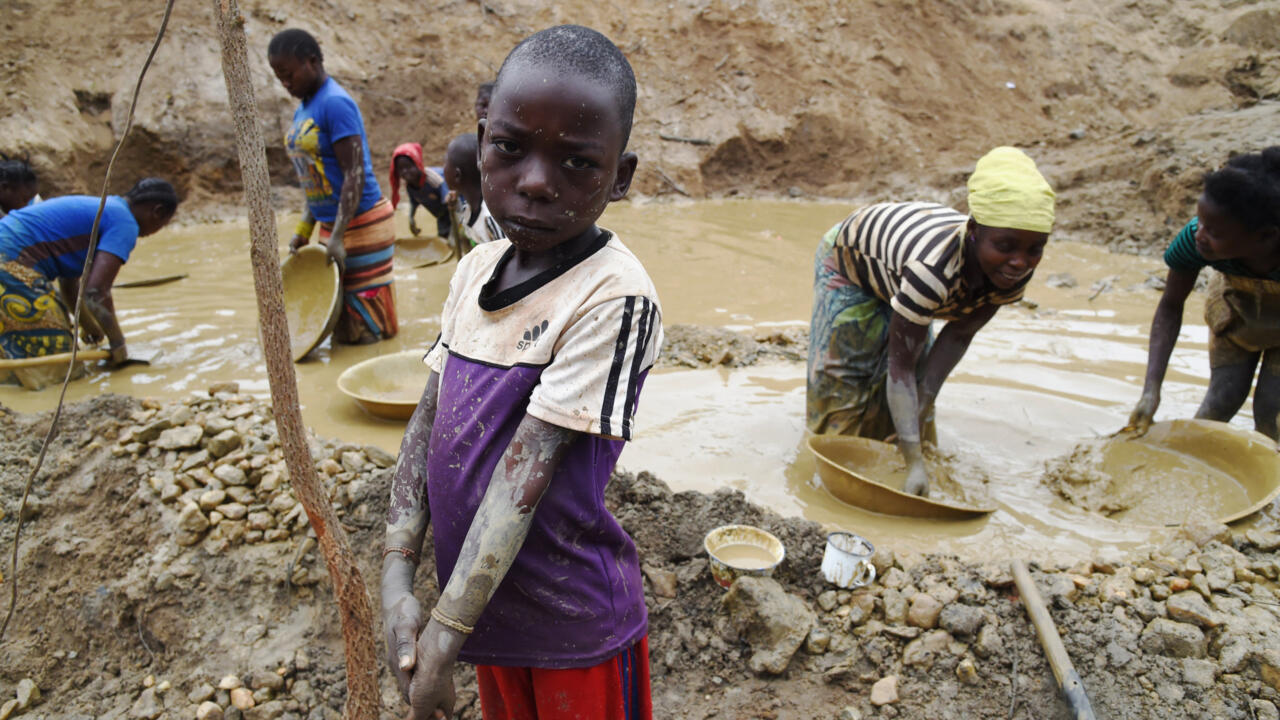Pregnant teens in Kenya’s low-income areas avoid health care because of fear and stigma – The Conversation

Report on Barriers to Adolescent Antenatal Care and Alignment with Sustainable Development Goals
Introduction: Adolescent Maternal Health in the Context of SDGs
This report examines the significant barriers pregnant adolescents face in accessing antenatal care within urban informal settlements in Nairobi, Kenya. These challenges directly impede progress towards several key Sustainable Development Goals (SDGs), particularly SDG 3 (Good Health and Well-being), SDG 5 (Gender Equality), and SDG 10 (Reduced Inequalities). Research indicates that fear, stigma, and judgmental attitudes from healthcare providers deter adolescents from seeking essential care, leading to heightened health risks for both mothers and infants, a reality starkly at odds with global health targets.
Analysis of Key Findings
A 2022 qualitative study conducted in a Nairobi informal settlement revealed a pattern of delayed or avoided antenatal care among pregnant adolescents. The adolescent birth rate in these areas is significantly higher than the national average, highlighting a critical gap in sexual and reproductive health services, a core component of SDG 3 and SDG 5. Many participants initiated antenatal care late, often in the second or third trimester, missing the crucial window for early intervention recommended by the World Health Organization.
Primary Barriers to Antenatal Care Access
The study identified several factors that prevent timely access to care, undermining SDG Target 3.1 (reduce the global maternal mortality ratio) and Target 3.7 (ensure universal access to sexual and reproductive health-care services).
- Lack of awareness regarding the early signs of pregnancy and the importance of antenatal care.
- Fear of negative consequences, including social stigma, familial punishment, or abandonment by partners.
- Stigmatization and harsh treatment by healthcare providers, which creates a hostile environment contrary to the principles of universal health coverage (SDG 3).
- Concerns regarding the lack of privacy and confidentiality in clinical settings, a critical aspect of youth-friendly services.
Implications for Sustainable Development Goals
The findings demonstrate a clear failure to meet the needs of a vulnerable population, with direct consequences for multiple SDGs.
- SDG 3 (Good Health and Well-being): The globally higher maternal mortality rate among adolescents (15-19) compared to women aged 20-24, coupled with higher risks of childbirth complications and adverse neonatal outcomes, shows a critical failure in achieving Target 3.1. Delayed care directly contravenes WHO recommendations and hinders progress.
- SDG 5 (Gender Equality): The stigma and judgment faced by pregnant adolescents are gender-specific barriers. Ensuring these girls can access healthcare without discrimination is fundamental to achieving Target 5.6, which calls for universal access to sexual and reproductive health and rights.
- SDG 10 (Reduced Inequalities): The focus on informal settlements underscores the profound inequalities in healthcare access. The experiences of these adolescents exemplify the marginalization that SDG 10 seeks to eliminate by ensuring equal opportunity and access to services for all, irrespective of age or economic status.
Recommendations for Policy and Programmatic Intervention
To address these challenges and accelerate progress towards the SDGs, a multi-layered intervention strategy is required.
- Enhance Community Engagement to Combat Stigma: In line with SDG 10, initiatives must be launched within families, schools, and community organizations to create supportive environments for pregnant adolescents. Engaging parents and male partners is crucial to fostering a culture of support rather than judgment.
- Establish Youth-Friendly Health Services: To meet the objectives of SDG 3 and SDG 5, healthcare facilities must train staff to provide respectful, non-judgmental, and confidential care. This ensures that clinics become safe spaces for adolescents, encouraging early and consistent attendance.
- Increase Knowledge Dissemination on Antenatal Care: Community-wide awareness campaigns are needed to disseminate information about the importance of antenatal care, including when and where to seek services. This empowers adolescents with the knowledge required to protect their health and well-being.
SDGs Addressed or Connected to the Issues Highlighted
SDG 3: Good Health and Well-being
- The article’s central theme is the health of pregnant adolescents and their children in Nairobi’s informal settlements. It directly discusses issues of maternal mortality, neonatal health, and access to essential healthcare services like antenatal care, which are core components of SDG 3.
SDG 5: Gender Equality
- The issues discussed disproportionately affect adolescent girls. The stigma, fear of judgment, and lack of supportive environments are gendered issues that create barriers for girls in accessing reproductive healthcare. The article highlights how societal norms about adolescent female sexuality impact their health and well-being, connecting directly to the goal of achieving gender equality and empowering all women and girls.
SDG 10: Reduced Inequalities
- The article focuses on a particularly vulnerable and marginalized group: pregnant adolescents living in low-income urban informal settlements. It highlights the inequalities in health outcomes and access to care they face compared to older women and those in more affluent areas. The harsh treatment from some healthcare providers is a form of discrimination that exacerbates these inequalities.
Specific Targets Identified
Targets under SDG 3: Good Health and Well-being
-
Target 3.1: By 2030, reduce the global maternal mortality ratio to less than 70 per 100,000 live births.
- The article directly addresses this target by stating, “Globally, the maternal mortality rate for pregnant adolescents aged 15-19 years is much higher than that of young women aged 20-24 years.” The lack of antenatal care, which the article focuses on, is a key contributor to preventable maternal deaths.
-
Target 3.2: By 2030, end preventable deaths of newborns and children under 5 years of age.
- The article connects to this target by explaining that “babies born to adolescent mothers are more prone to neonatal conditions, low birth weight, and preterm birth.” Early and consistent antenatal care, which the girls are avoiding, is crucial for mitigating these risks and preventing neonatal deaths.
-
Target 3.7: By 2030, ensure universal access to sexual and reproductive health-care services, including for family planning, information and education.
- This is a central target. The article details the significant barriers—stigma, fear, lack of confidentiality, and harsh treatment—that prevent adolescent girls from accessing antenatal care, a critical reproductive health service. The high adolescent pregnancy rate itself suggests a gap in access to information and family planning.
Targets under SDG 5: Gender Equality
-
Target 5.6: Ensure universal access to sexual and reproductive health and reproductive rights.
- This target is addressed from a rights-based perspective. The article shows how adolescent girls’ right to access healthcare is undermined by “judgmental attitudes from health providers and community stigma.” The proposed solutions, such as creating “youth-friendly health services” and “supportive environments,” aim to secure these rights for girls.
Targets under SDG 10: Reduced Inequalities
-
Target 10.2: By 2030, empower and promote the social, economic and political inclusion of all, irrespective of age, sex… or other status.
- The article highlights the social exclusion of pregnant adolescents. Their fear of disclosing their pregnancy and the need to hide it (“I would usually find a Maasai sheet and wear a very big sweater”) demonstrate their marginalization within the community and healthcare system due to their age and status as pregnant adolescents.
-
Target 10.3: Ensure equal opportunity and reduce inequalities of outcome, including by eliminating discriminatory… practices.
- The “harsh treatment by healthcare providers” and “judgmental attitudes” described in the article are discriminatory practices that lead to unequal health outcomes (higher mortality and complications). The call to train staff for “respectful, non-judgmental care” directly addresses the need to eliminate such practices.
Indicators Mentioned or Implied
Indicators for SDG 3 Targets
-
Indicator 3.1.1: Maternal mortality ratio.
- The article explicitly mentions this indicator by stating that the “maternal mortality rate for pregnant adolescents aged 15-19 years is much higher than that of young women aged 20-24 years.”
-
Indicator 3.2.2: Neonatal mortality rate.
- This indicator is implied. The article states that babies of adolescent mothers are at higher risk of “neonatal conditions, low birth weight, and preterm birth,” which are the primary drivers of the neonatal mortality rate.
-
Indicator 3.7.2: Adolescent birth rate (aged 10-14 years; aged 15-19 years) per 1,000 women in that age group.
- The article provides precise data for this indicator: “The Kenya Demographic and Health Survey 2022 puts the adolescent birth rate… at 73 per 1,000” and notes a higher rate of “116 per 1,000 girls aged 15-19” in Nairobi’s informal settlements.
Indicators for SDG 5 Targets
-
Indicator 5.6.1: Proportion of women aged 15-49 years who make their own informed decisions regarding sexual relations, contraceptive use and reproductive health care.
- The article implies a low proportion for this indicator among the study group. The girls’ decisions to delay or avoid care are driven by external factors like “fear of the consequences of disclosing their pregnancy, such as being beaten, forced to leave school, or abandoned,” rather than being their own free and informed choices.
Indicators for SDG 10 Targets
-
Indicator 10.3.1: Proportion of population reporting having personally felt discriminated against or harassed… on the basis of a ground of discrimination prohibited under international human rights law.
- This is strongly implied through the qualitative data presented. The fear of being “judged or insulted” by doctors, the experience of “poor treatment from healthcare providers,” and feeling the need to hide one’s pregnancy are all reflections of perceived discrimination based on age and pregnancy status.
Summary Table
| SDGs | Targets | Indicators |
|---|---|---|
| SDG 3: Good Health and Well-being | 3.1: Reduce global maternal mortality.
3.2: End preventable deaths of newborns. 3.7: Ensure universal access to sexual and reproductive health-care services. |
3.1.1: Maternal mortality ratio (mentioned as being higher for adolescents).
3.2.2: Neonatal mortality rate (implied through risks like low birth weight and preterm birth). 3.7.2: Adolescent birth rate (specific data provided for Kenya and Nairobi settlements). |
| SDG 5: Gender Equality | 5.6: Ensure universal access to sexual and reproductive health and reproductive rights. | 5.6.1: Proportion of women making their own informed decisions regarding reproductive health care (implied to be low due to fear and stigma). |
| SDG 10: Reduced Inequalities | 10.2: Promote social inclusion of all, irrespective of age.
10.3: Ensure equal opportunity and eliminate discriminatory practices. |
10.3.1: Proportion of population reporting discrimination (implied through qualitative accounts of fear of judgment and harsh treatment from healthcare providers). |
Source: theconversation.com

What is Your Reaction?
 Like
0
Like
0
 Dislike
0
Dislike
0
 Love
0
Love
0
 Funny
0
Funny
0
 Angry
0
Angry
0
 Sad
0
Sad
0
 Wow
0
Wow
0















































/environment-climate-change-and-health-(ech)/water-sanitation-hygiene-and-health-(wsh)/landfill-tuvalu-36092.tmb-1200v.jpg?sfvrsn=5c21fe40_1#)


.jpg.webp?itok=0ZsAnae9#)

























